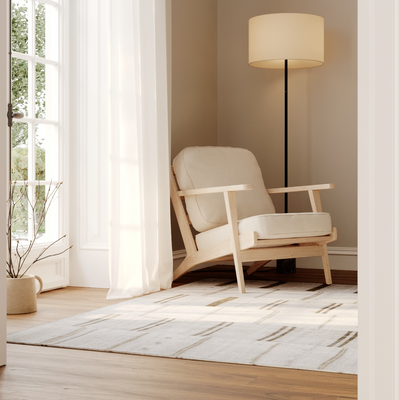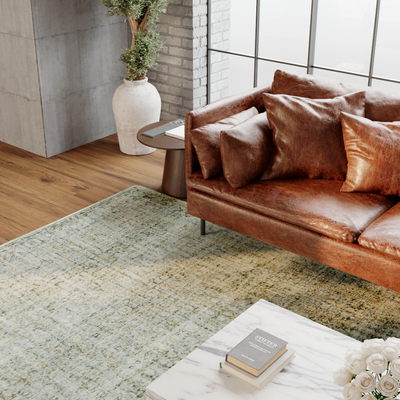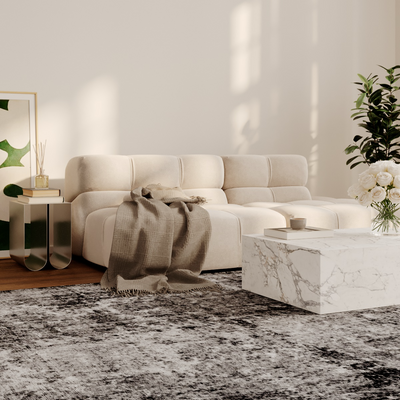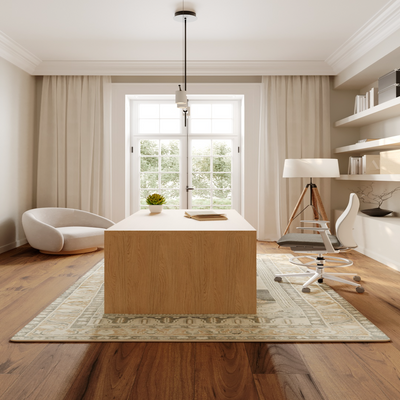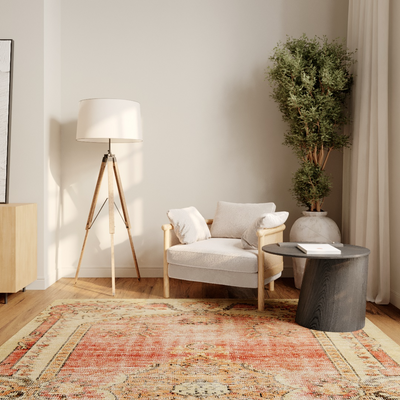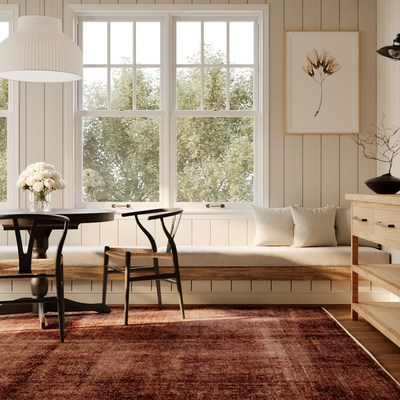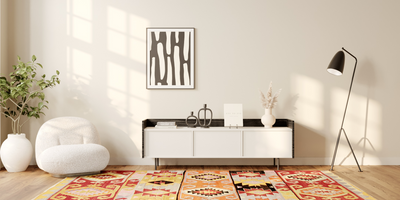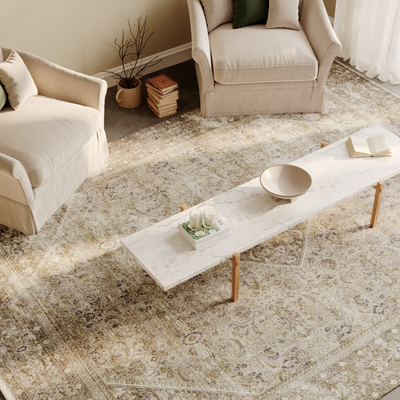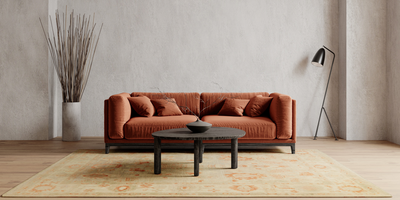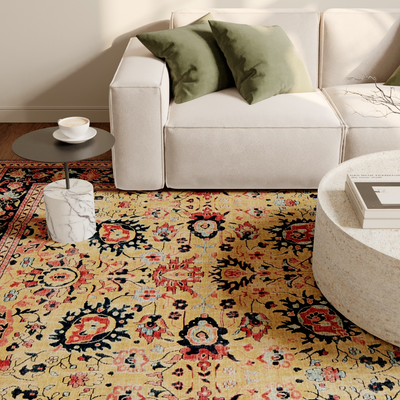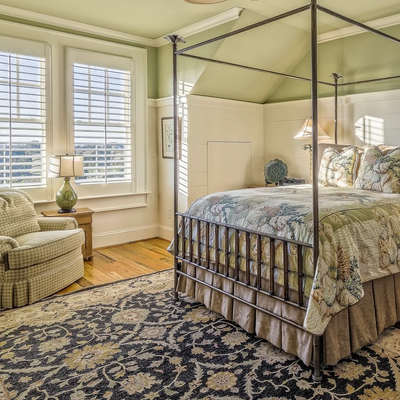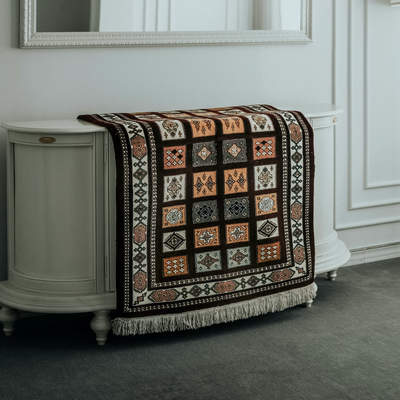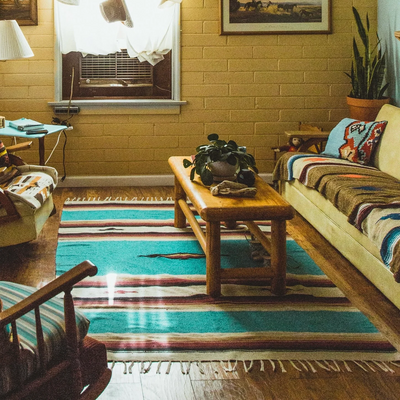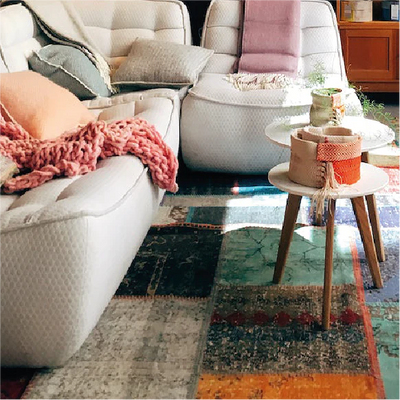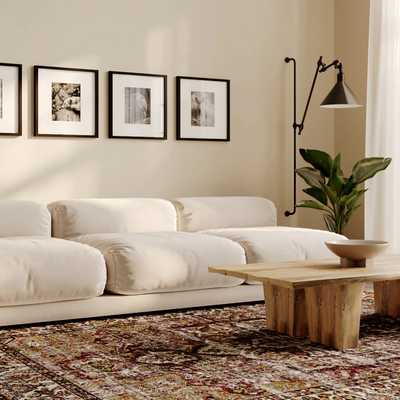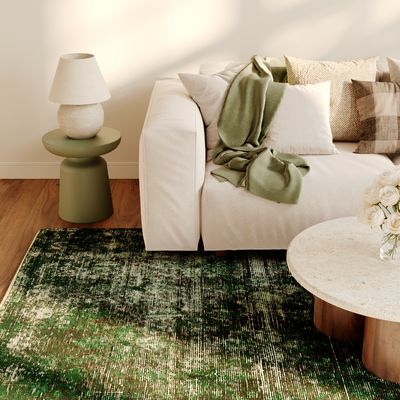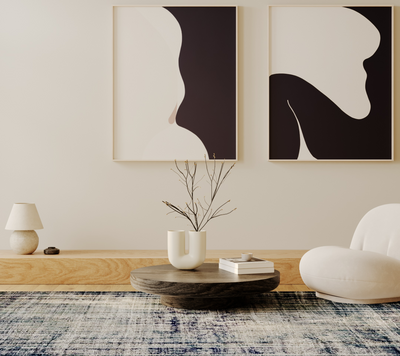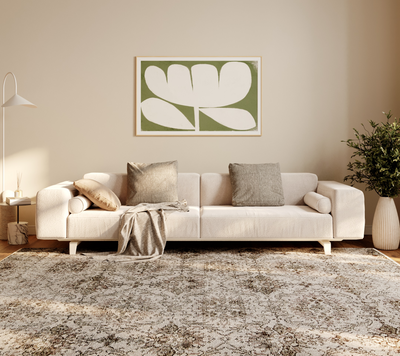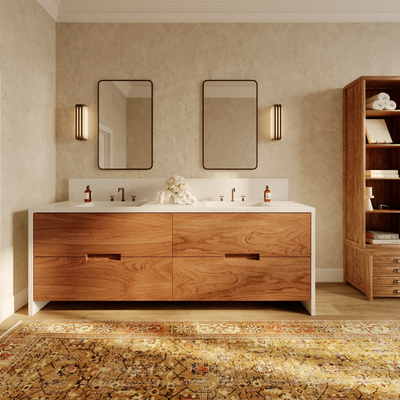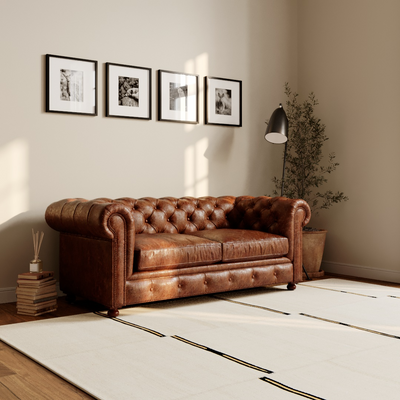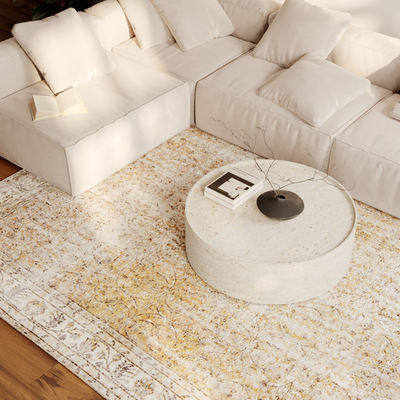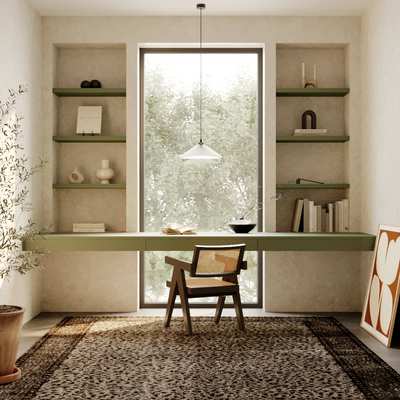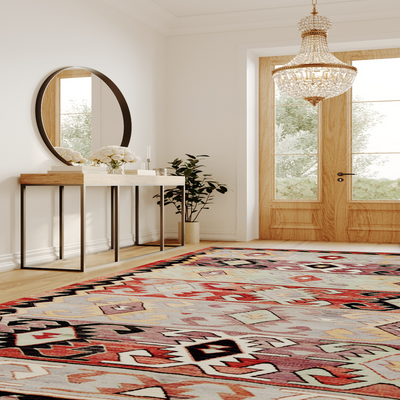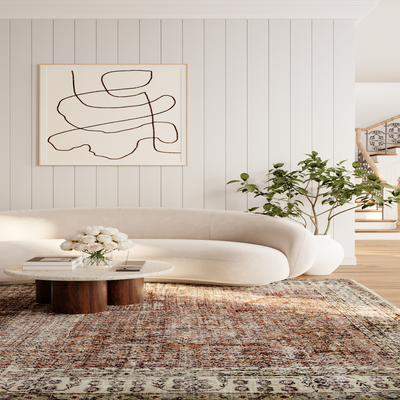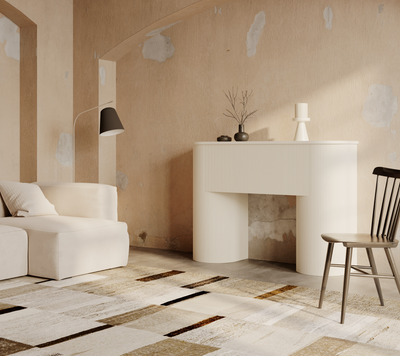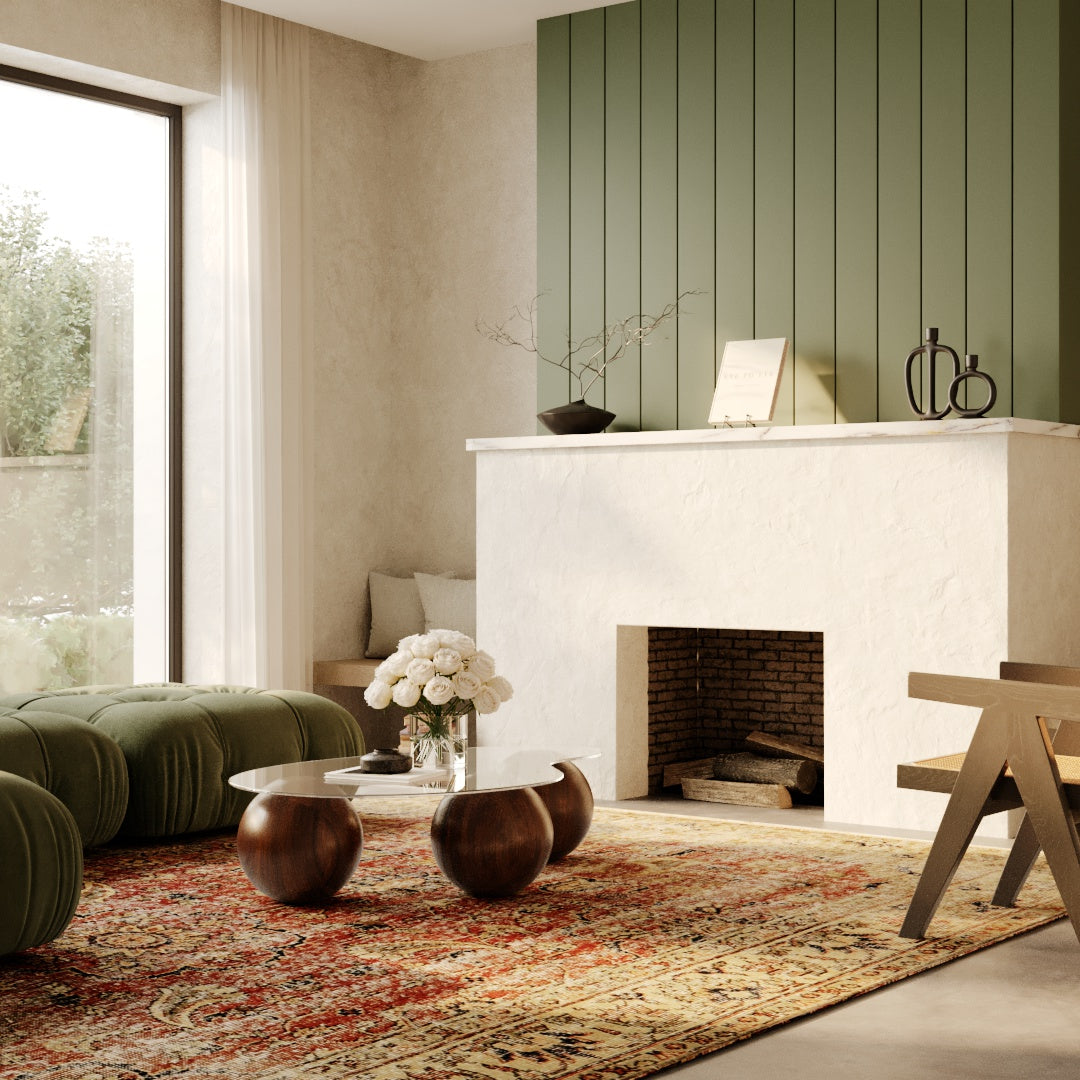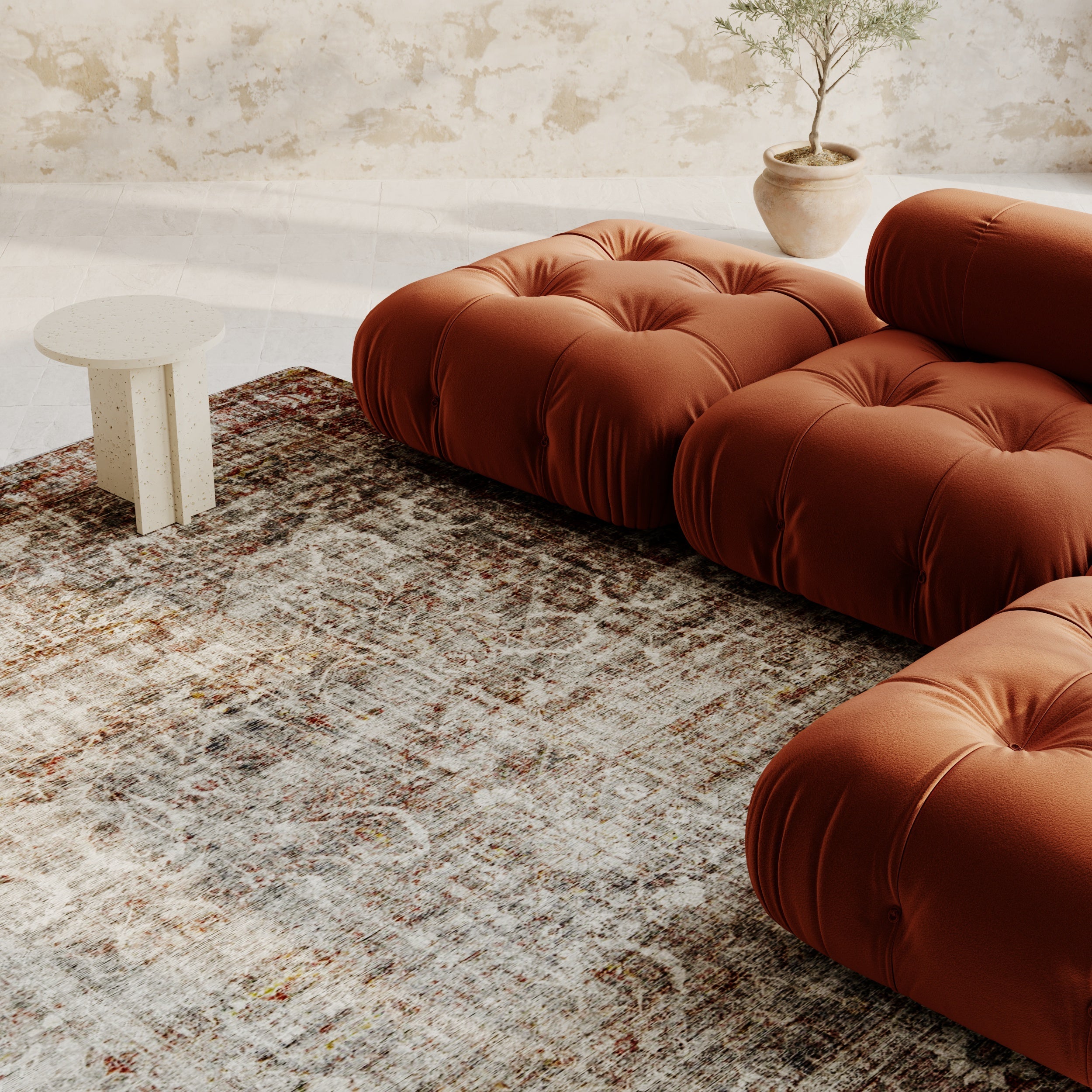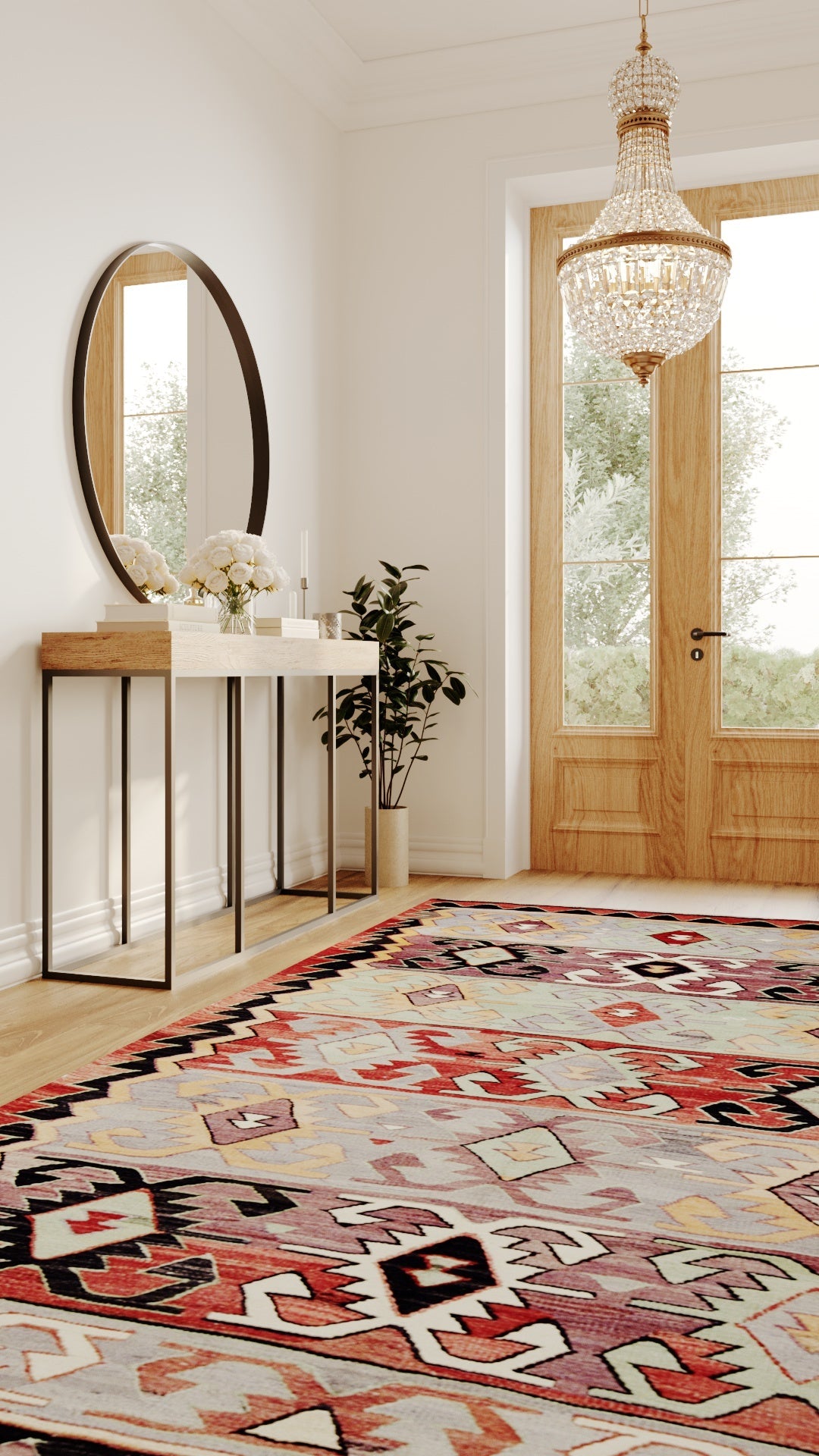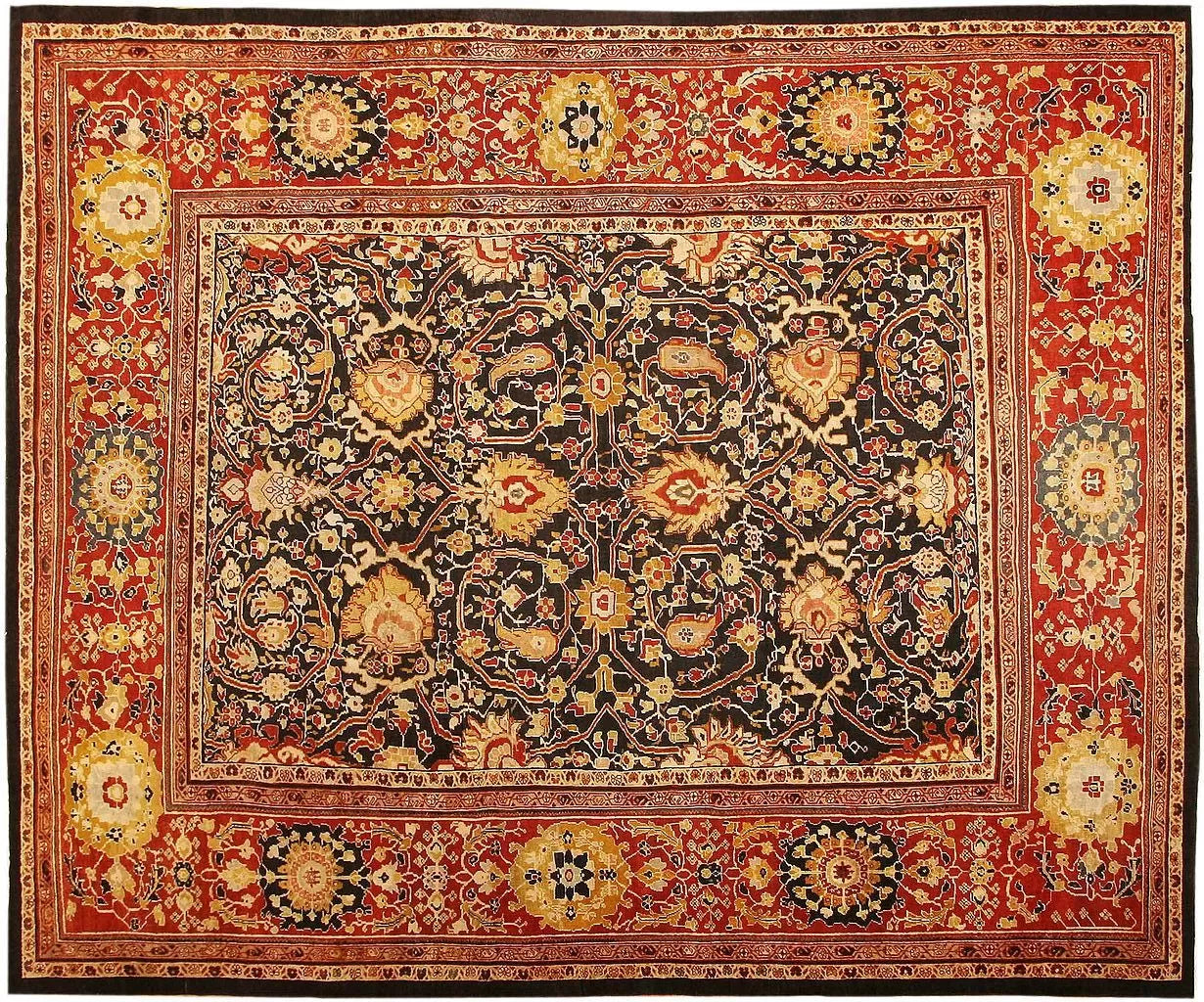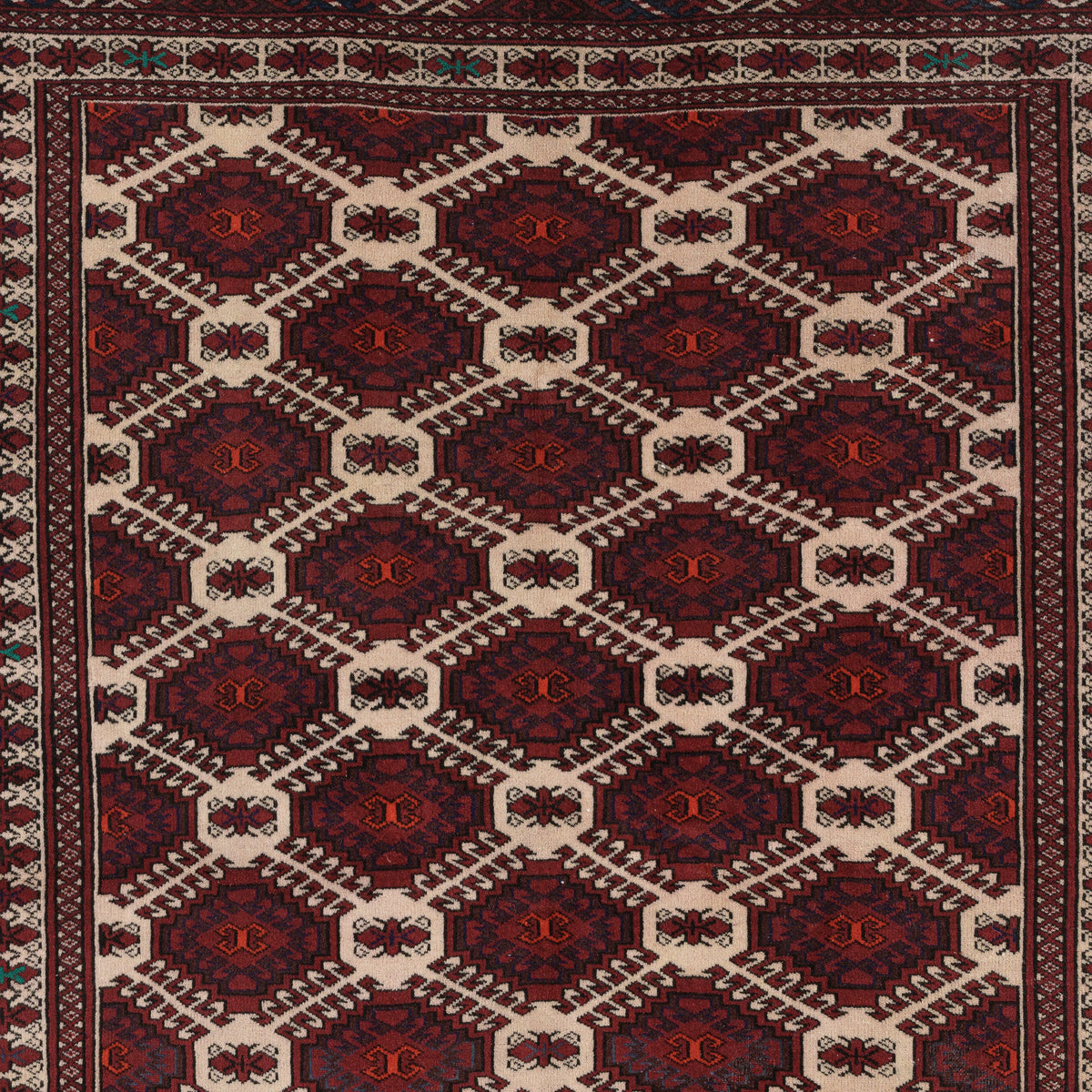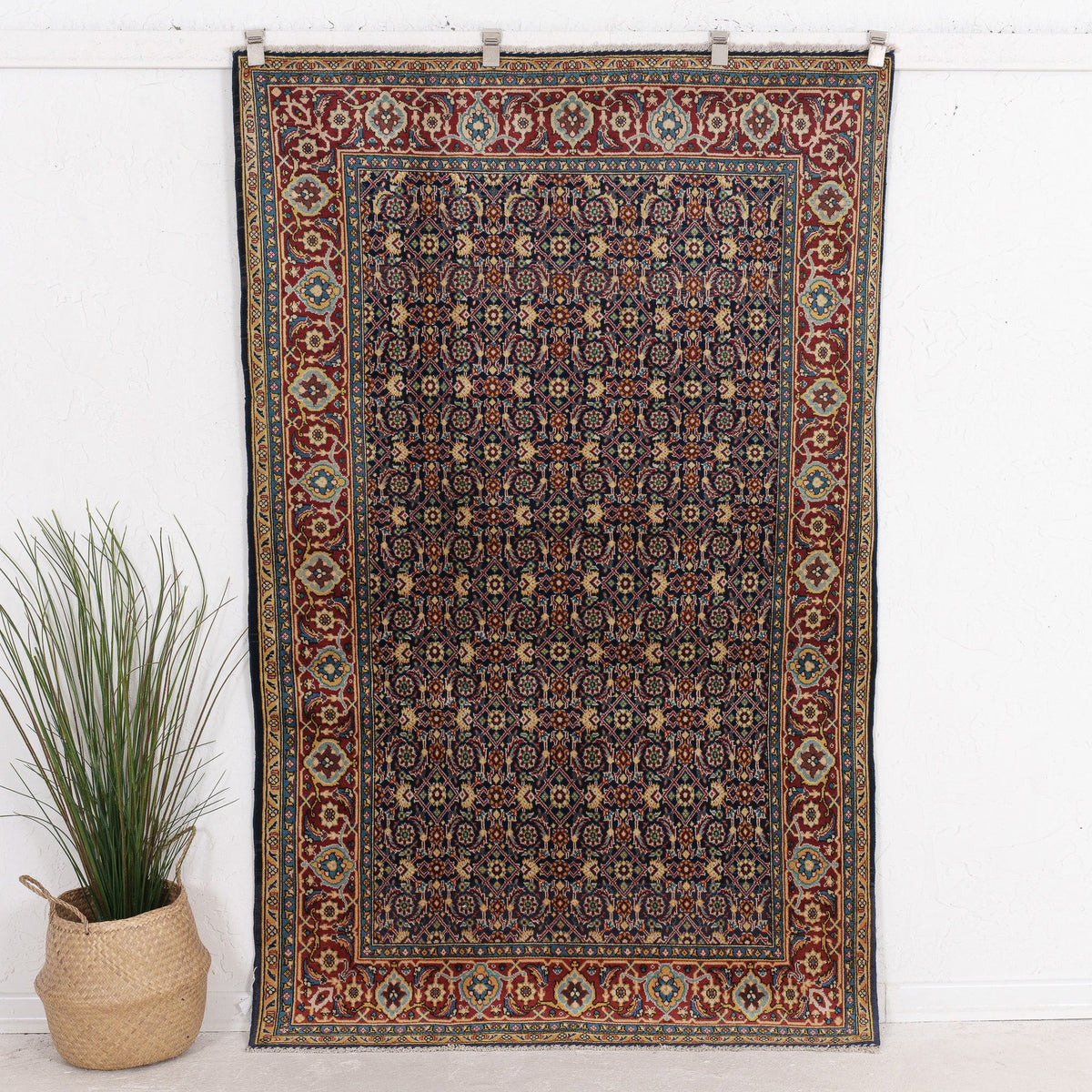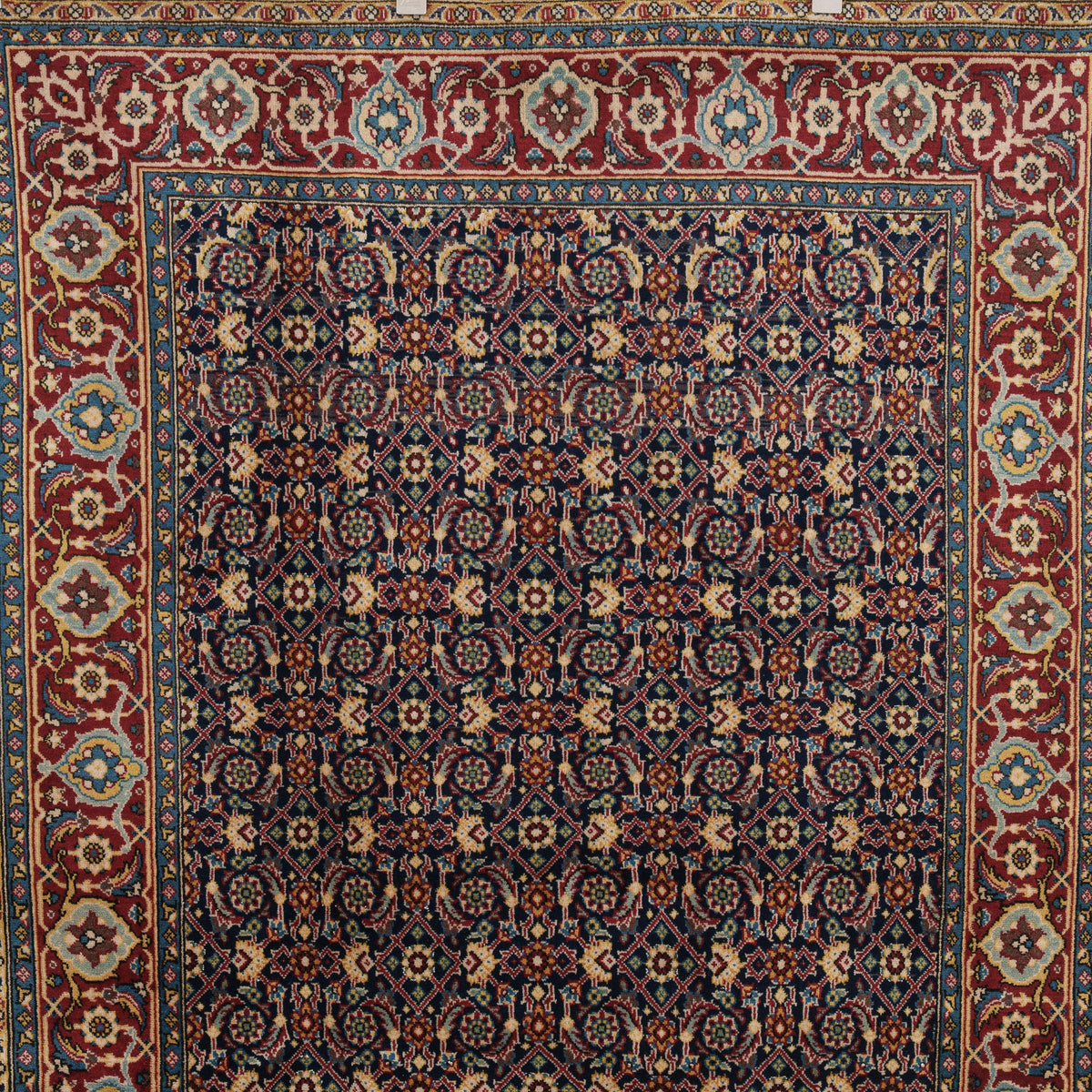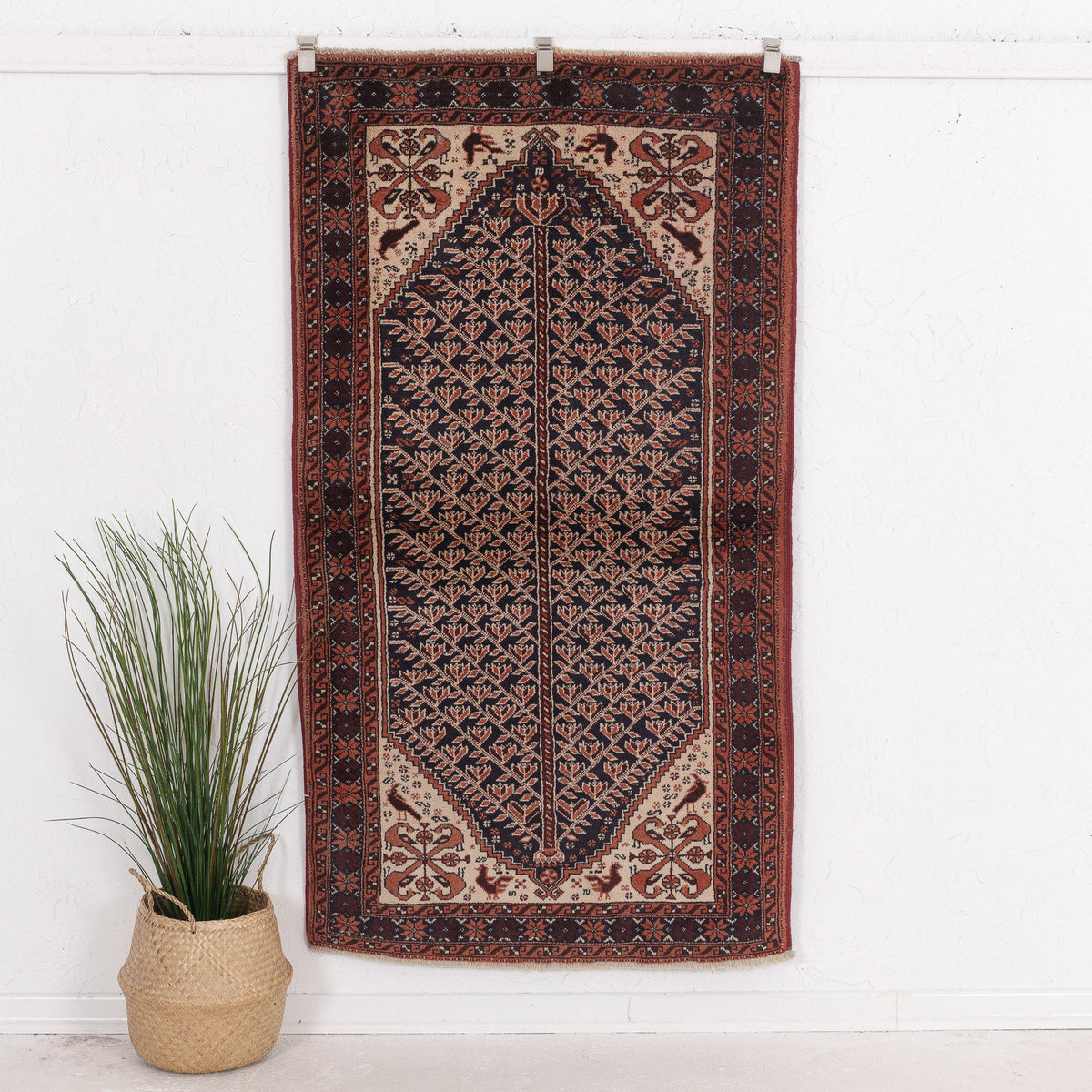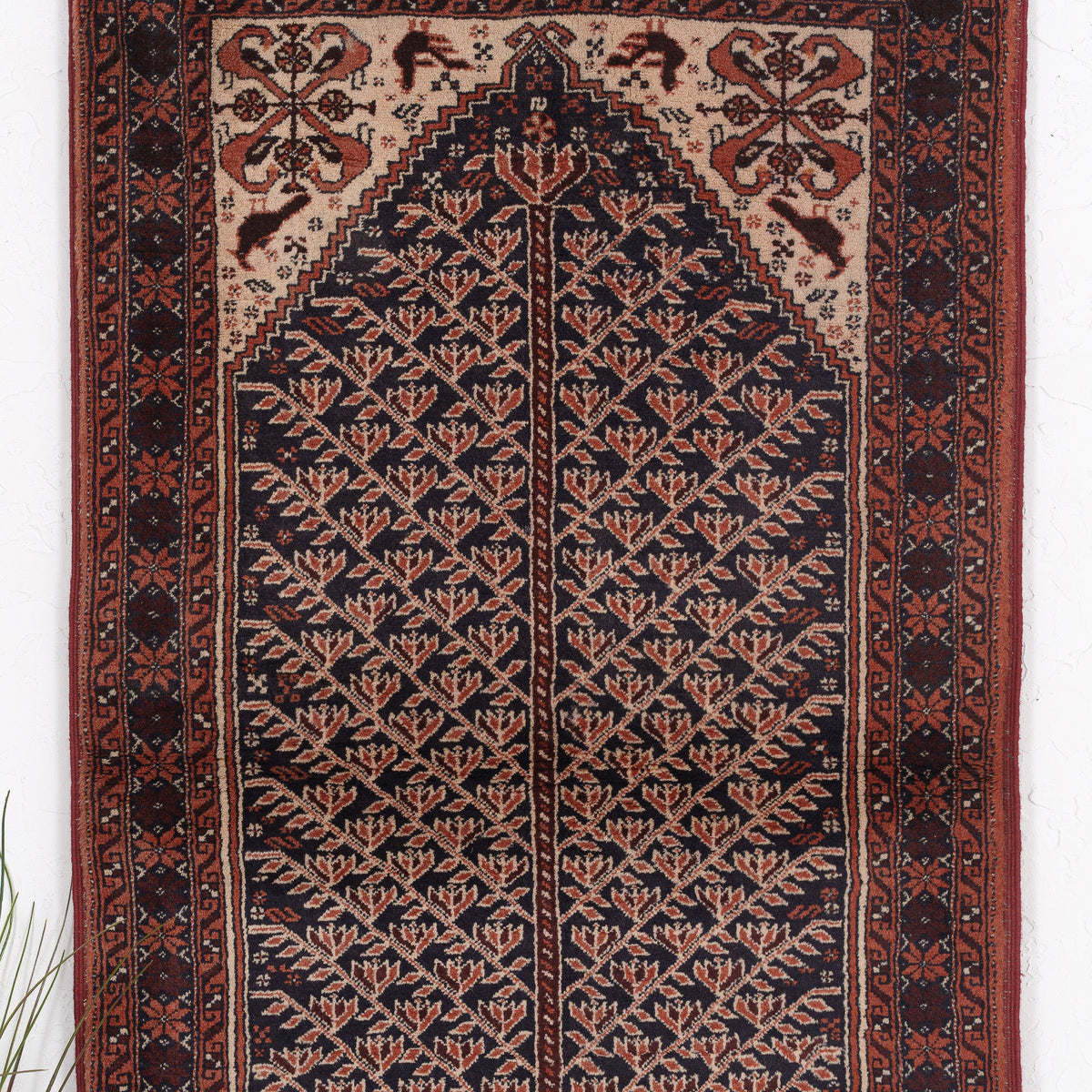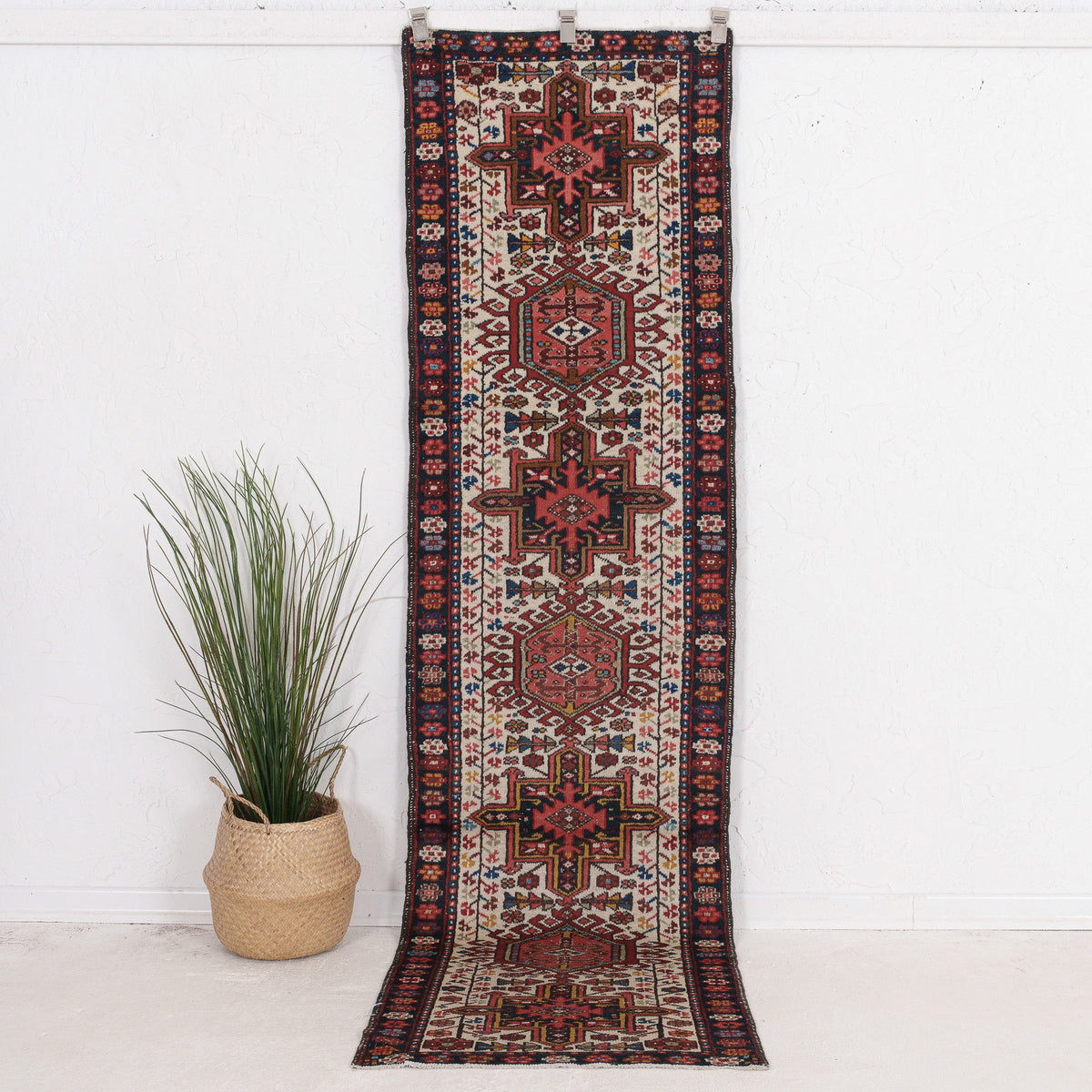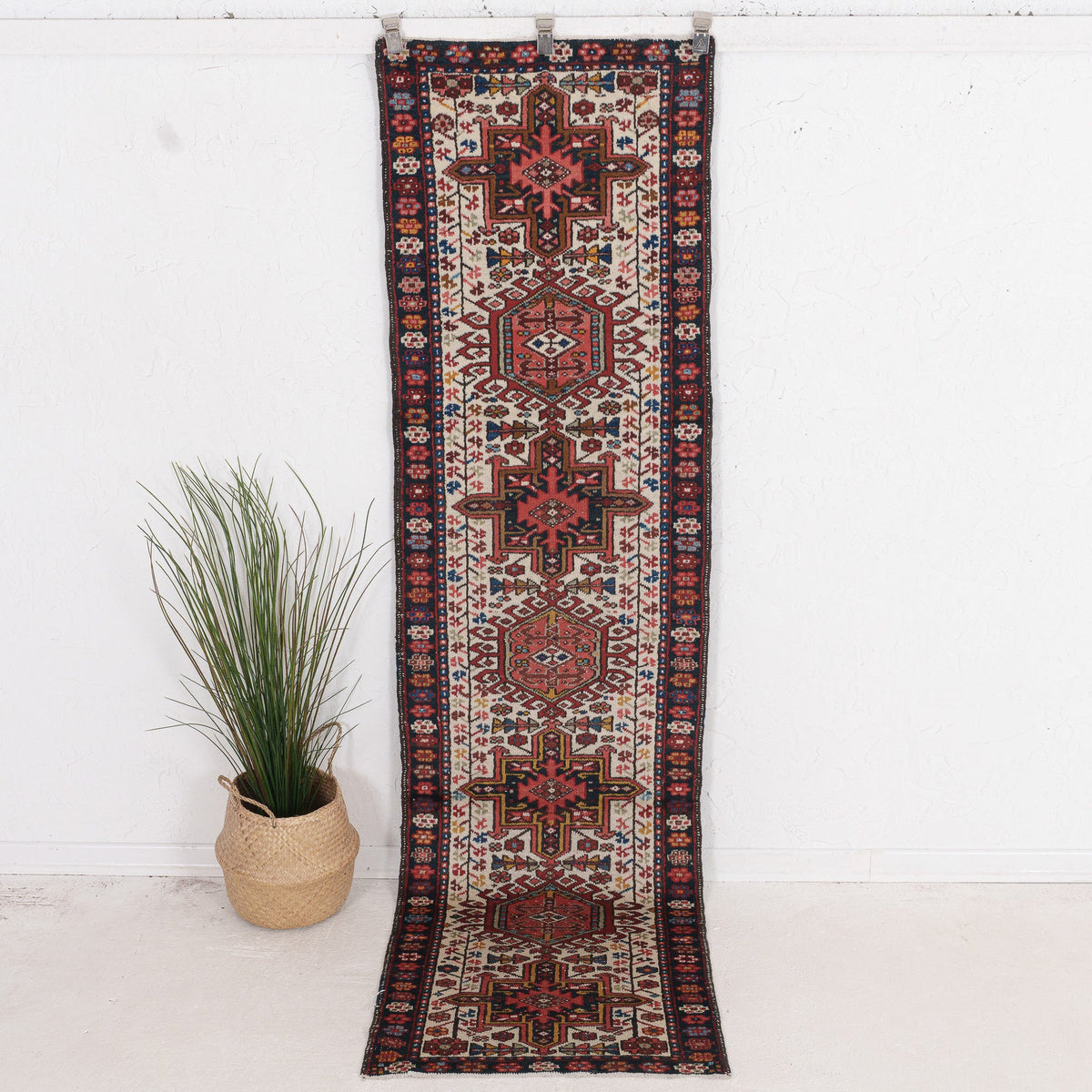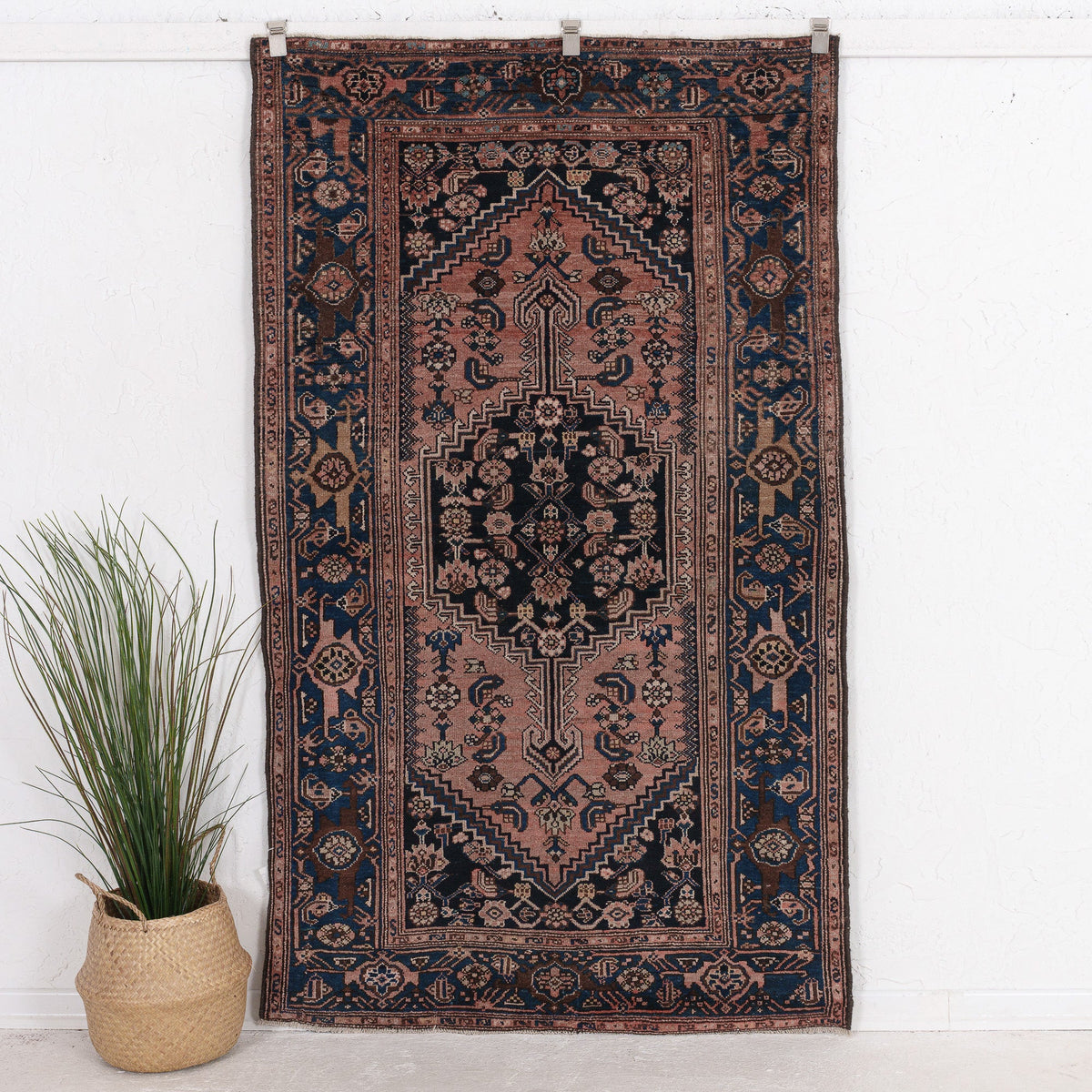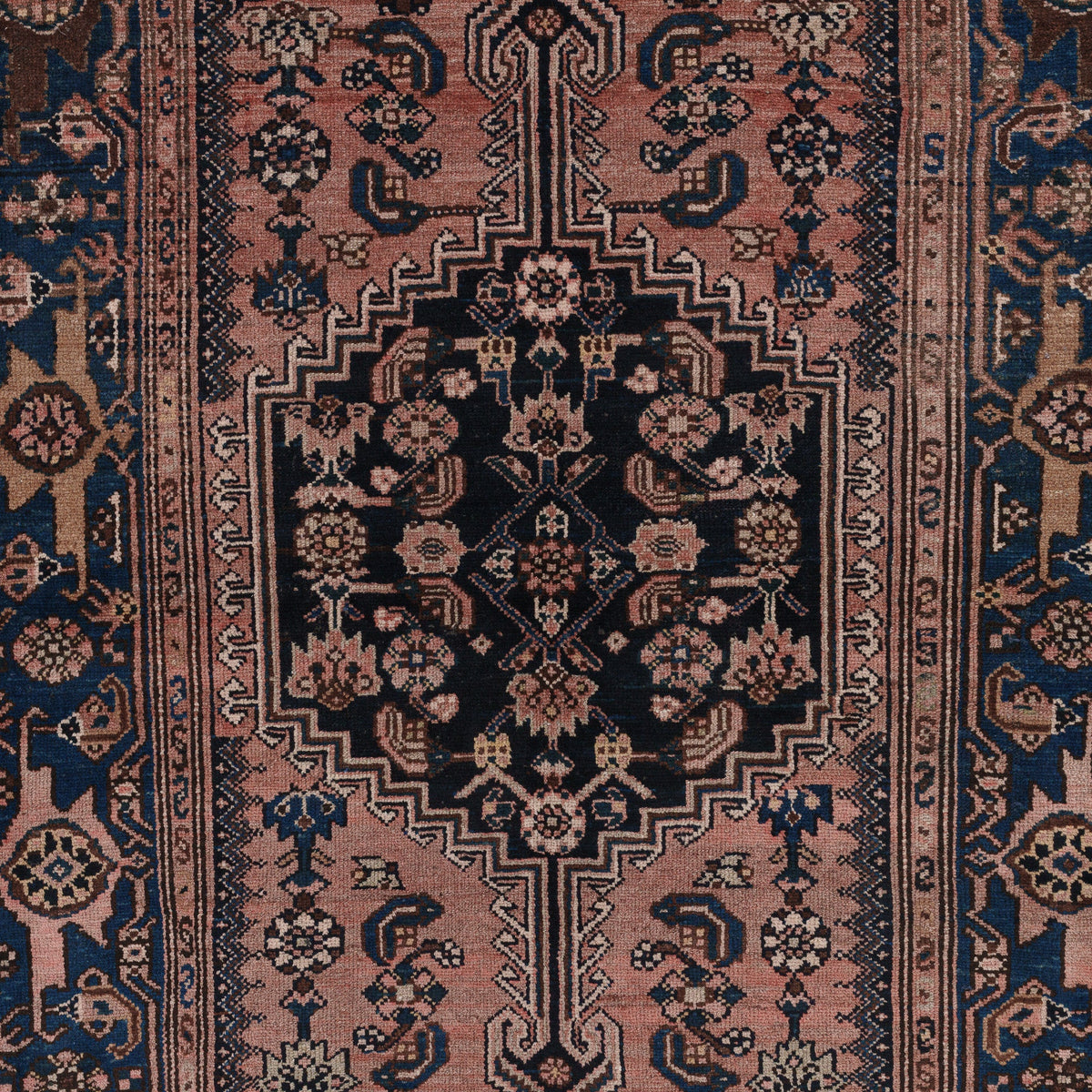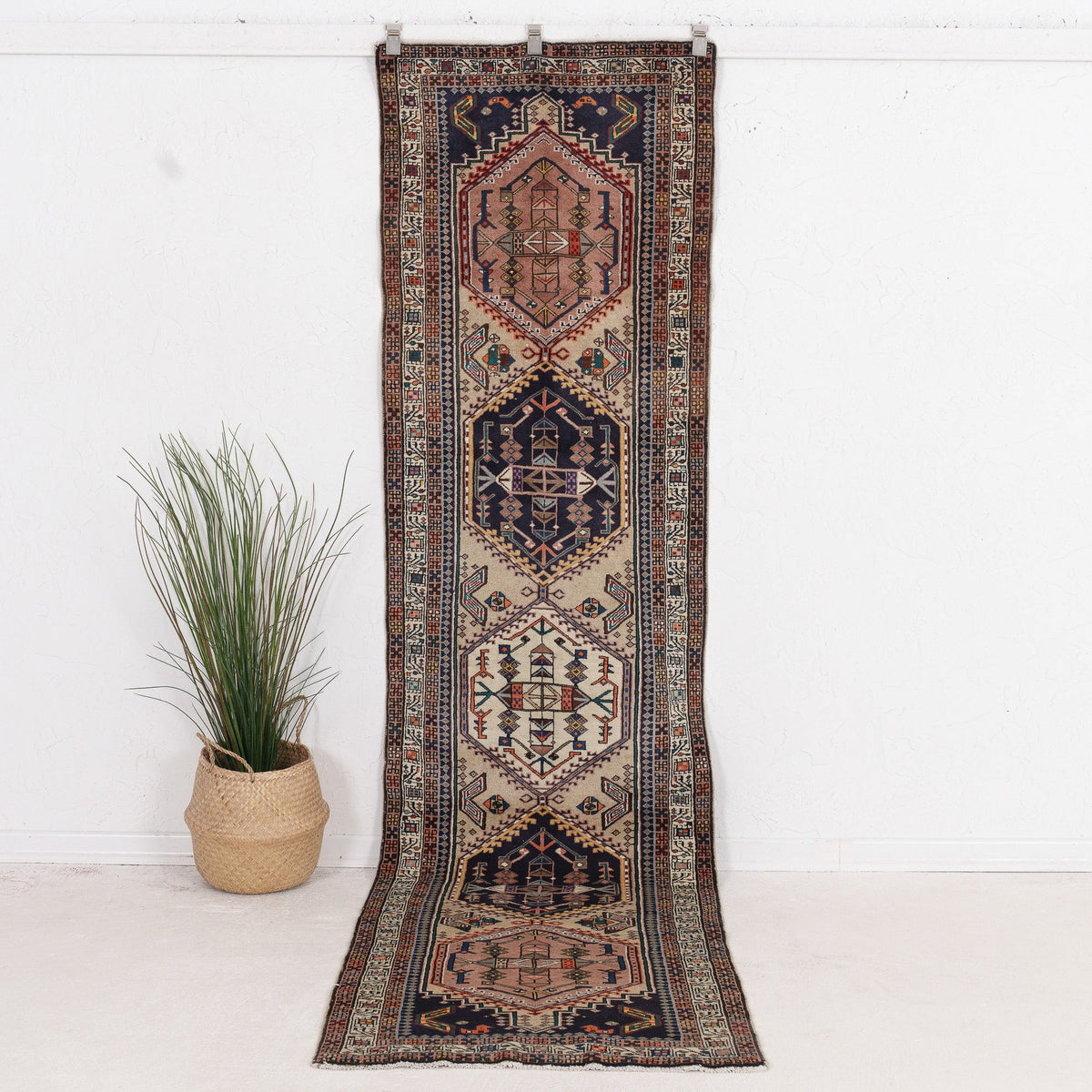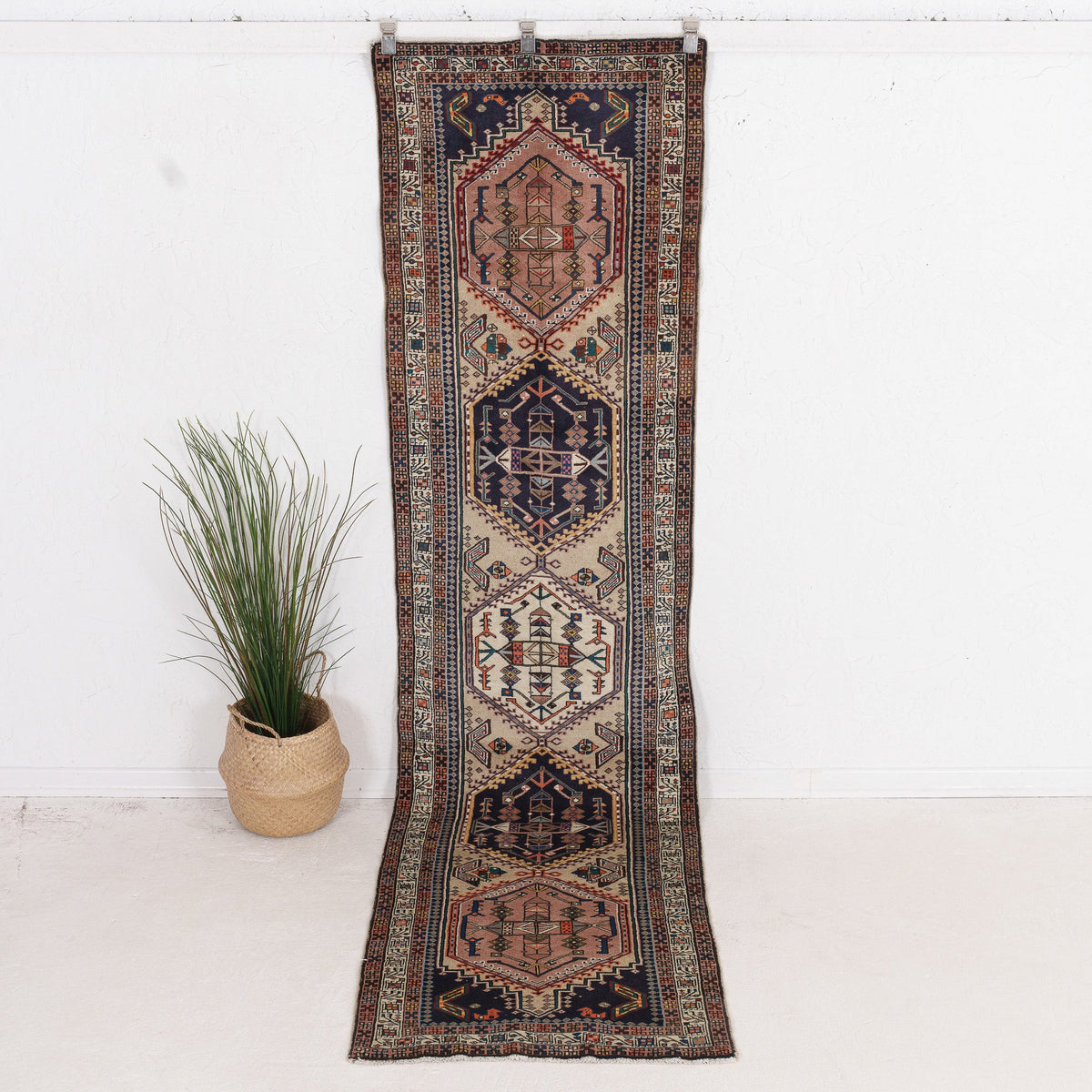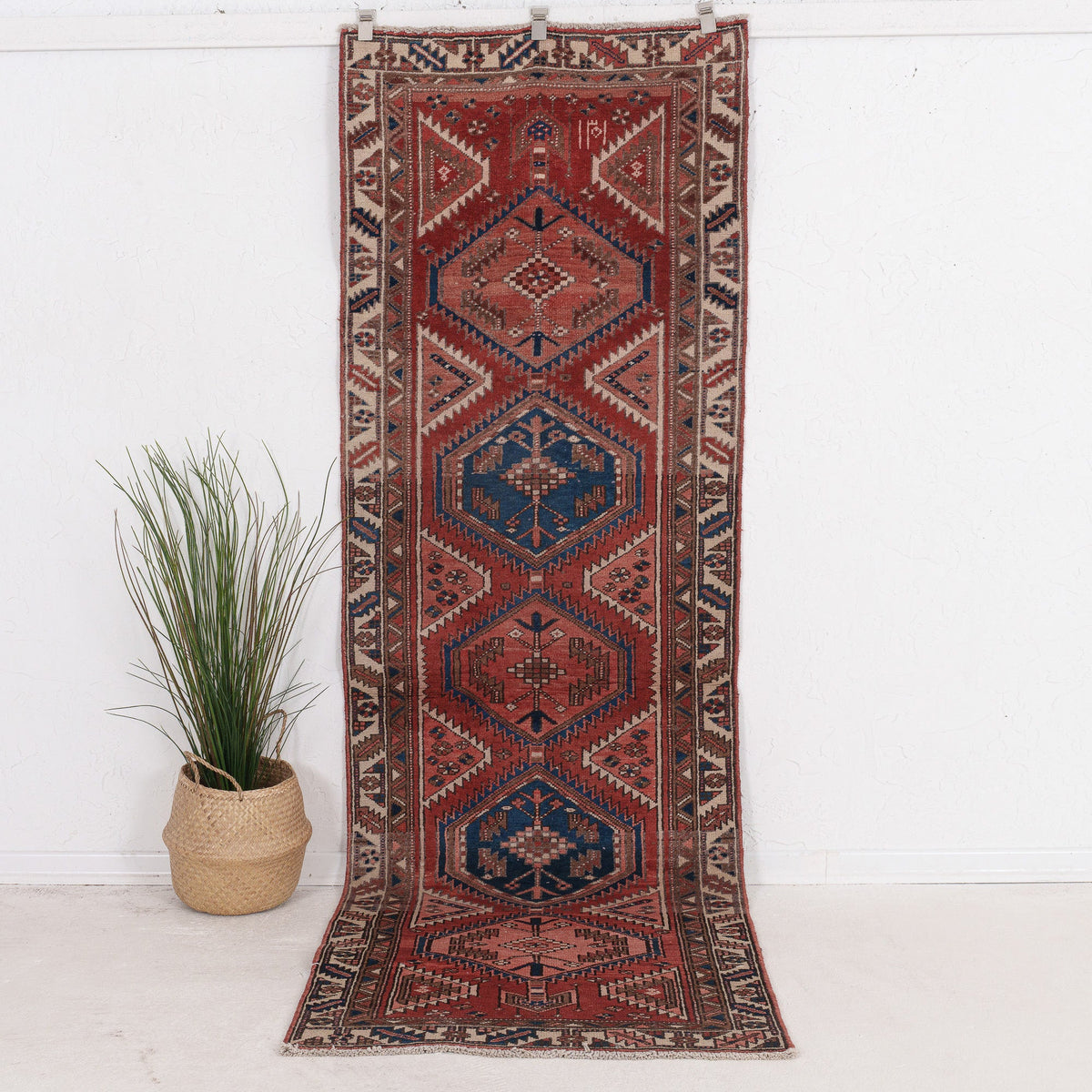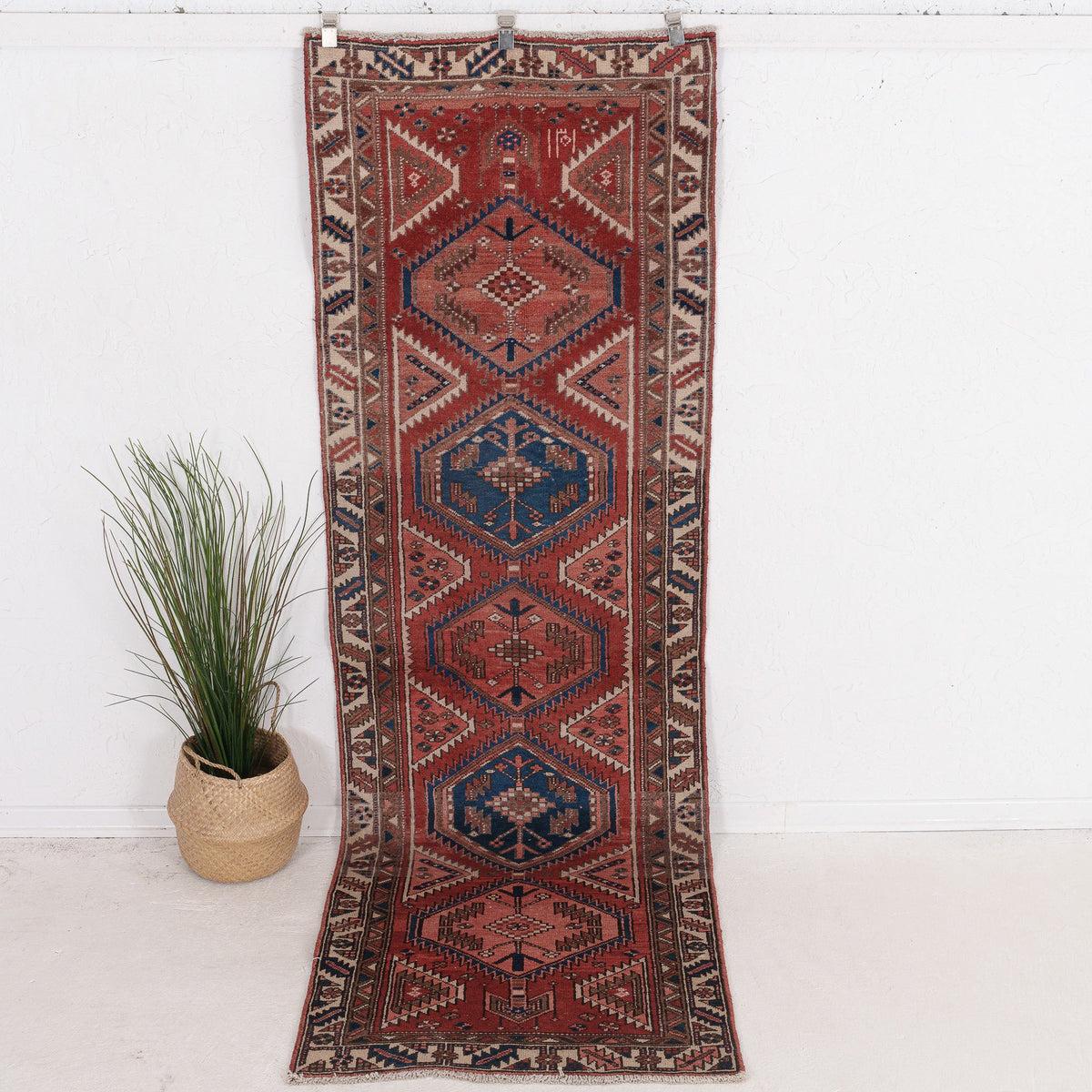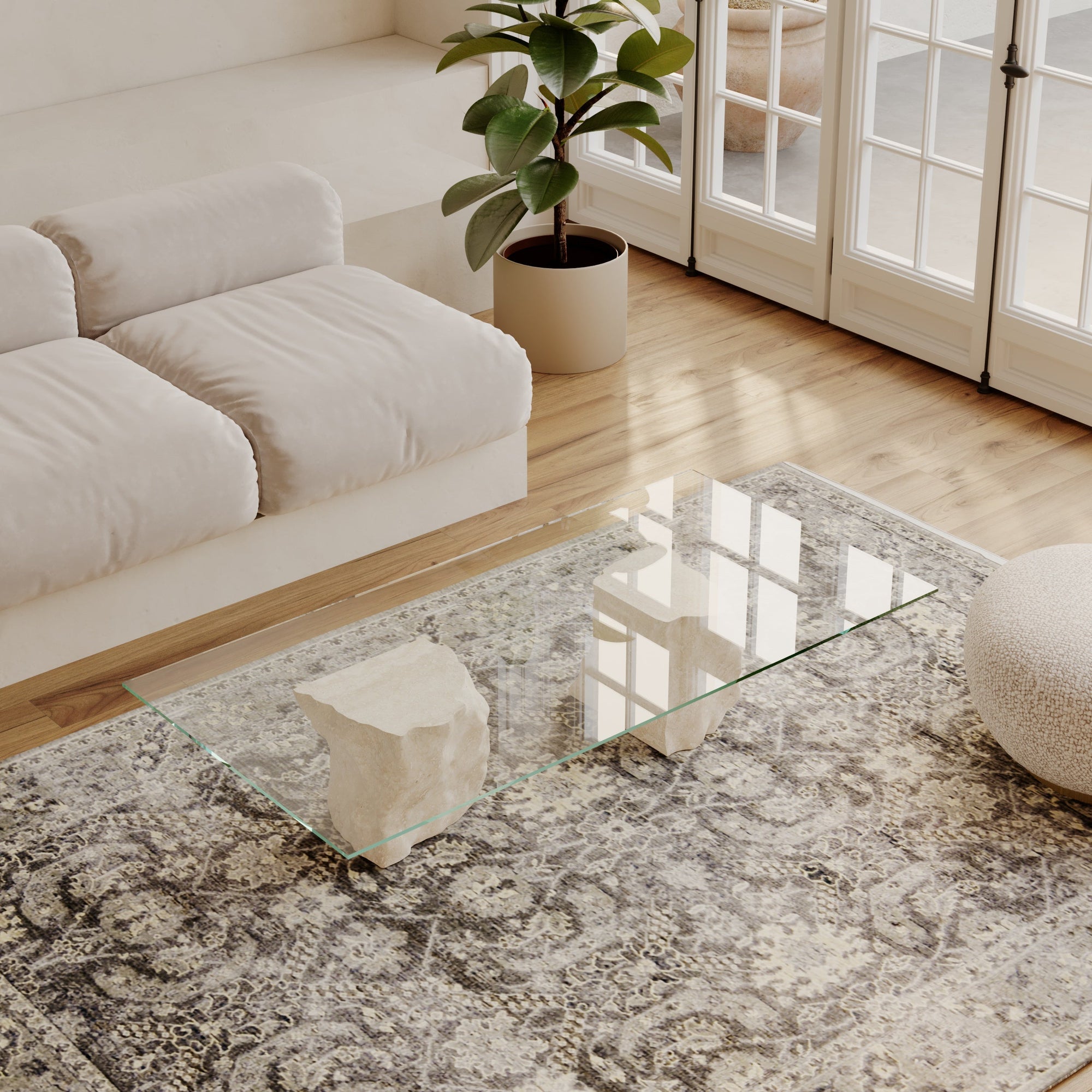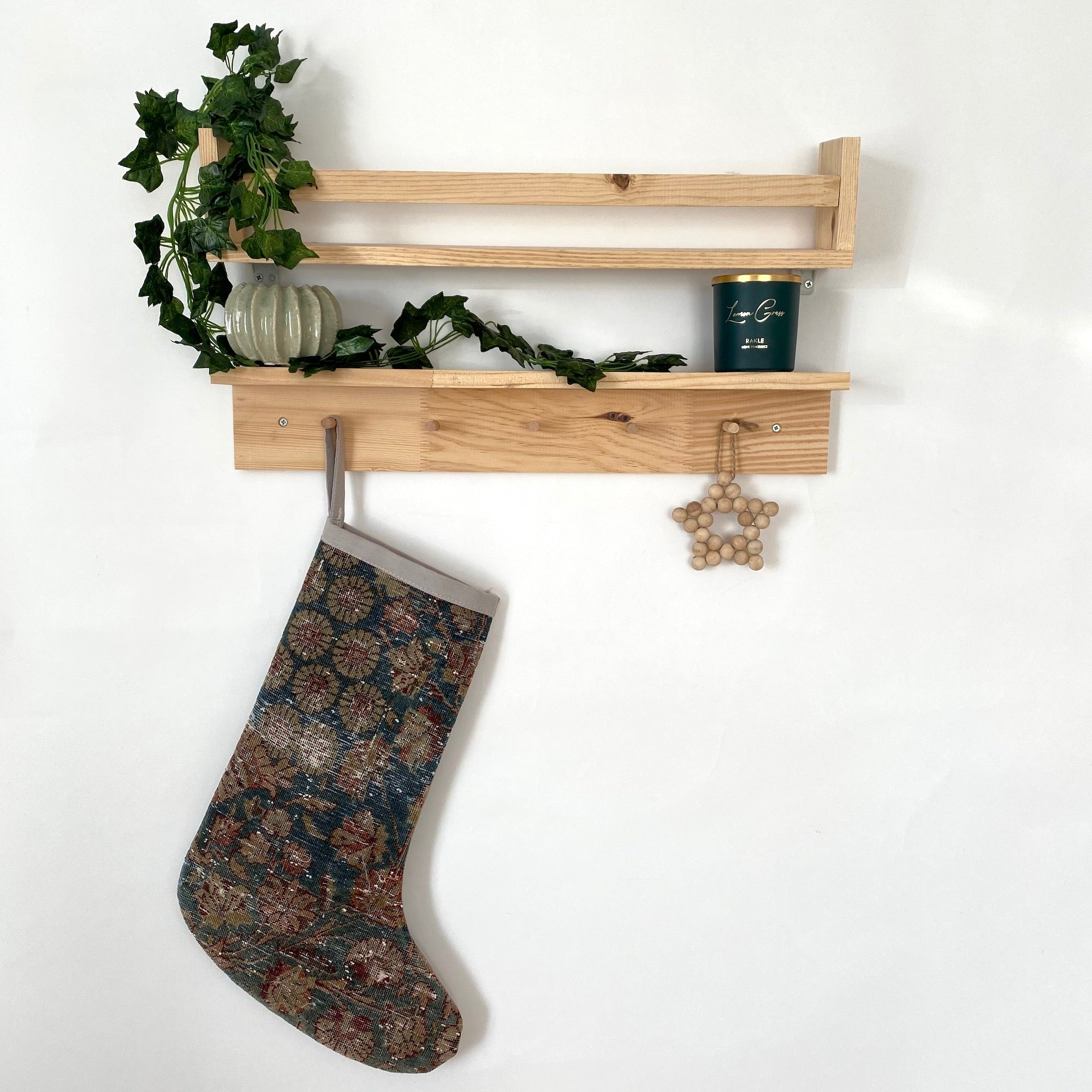There are a million reasons to fall in love with Persian rugs and a million more to own one of them. But knowing the suitable Persian designs and patterns can save you more than a million. And this article is going to tell you how that is the case. Modern-day Iran, which was formerly called Persia, is the epicenter for the art of rug weaving.
Rugs have historical and religious significance in this part of the world. Persian carpets were used as a diplomatic gift between the royals, prayer mat, and insignia of tribal allegiance. Because of this storied history of Persia, there are hundreds of different types of rugs that date their origin to the Persian empire or modern-day Iran. Most of these rug types were looked into extensively in the contents of the last blog. Therefore, this blog will spotlight other most essential details of a Persian carpet. Persian rug designs, patterns, and ergonomics will be the main topics. That being said, let's start this thoroughfare with a sufficient dose of background and history.
The Rug Story
 The Pazyryk carpet, which was excavated from the Scythian nobleman's grave, is the oldest pile-woven carpet. This carpet was carbon-dated to the 5th century BC. After examining the Pazyryk carpet, it was obvious that the craft of carpet weaving went through an evolution before coming to the Scythian nobleman's memorial. The complexity in design and weaving technique indicated this. The first recorded mention of Persian carpet was even before that of Pazyryk. One of the beloved Greek authors, Xenophon, described the Persian carpet as a valued commodity within the noble class. This he does with the poetical elevation of the carpet in his finest work "Anabasis," which retells the military expedition of Cyrus the younger with his ten thousand Greek mercenaries to seize the throne from Artaxerxes II of Persia (his brother).
The Pazyryk carpet, which was excavated from the Scythian nobleman's grave, is the oldest pile-woven carpet. This carpet was carbon-dated to the 5th century BC. After examining the Pazyryk carpet, it was obvious that the craft of carpet weaving went through an evolution before coming to the Scythian nobleman's memorial. The complexity in design and weaving technique indicated this. The first recorded mention of Persian carpet was even before that of Pazyryk. One of the beloved Greek authors, Xenophon, described the Persian carpet as a valued commodity within the noble class. This he does with the poetical elevation of the carpet in his finest work "Anabasis," which retells the military expedition of Cyrus the younger with his ten thousand Greek mercenaries to seize the throne from Artaxerxes II of Persia (his brother). Rug Category
Understanding all the different types of rugs is difficult with just one sitting, doable but difficult. There are far too many rugs from Persia, which makes it challenging for anyone to remember all of the nuances that differentiate one rug from the other. For example, in Hamadan alone, there are one hundred and thirty-four villages, all of which have their style of carpets with their nuances in style, design, and craftsmanship. So, for understanding the wide selection of Persian rug style as a whole, it can be effectively divided into three major categories. The three major categories are the rugs that are made in the city, the rugs that are made in the village, and the rugs that are made by the tribe. It is especially interesting and logical to differentiate Persian rugs in this category because all the rugs are named after the city, village, or tribe they are made from.
The City Rugs
The city rugs are superior to the other two regarding the quality. The artisans or weavers of the rug from the city are called master weavers. In the city rugs, it is most usual to find the signature of the artisans that made the rug. That is similar to the practice of a fine artist signing his/her piece of art. The gender of the folks involved in the rug-making in the city is men (historically). And due to the high-quality carpets that were made, that too without industrial machines, the people who were involved in rug making have it as their full-time career.
The Village Rugs
The village rugs don't sometimes or always meet the quality of the city rugs. The people who made village rugs were not professional artisans. On the contrary, these rugs are made by families. However, these are made by hand and not machine-made rugs. The artisans who weave the rugs in this category are families, and they habitually do it from inspiration or memory of their travels. The main goal of the village rug makers is to make some side income from selling the rugs.

The Tribal Rugs
The tribal rugs, similar to the village rugs, are not on the same level in terms of the quality of the city rugs. The people who made tribal rugs were not professional artisans. On the contrary, these rugs are made by families, and the weaving job is not done by just one gender. However, a tribal rug is a handmaid carpet. There is no use of industrial machines for making rugs. The artisans who weave the rugs in this category are families, and they habitually do it from inspiration or memory of their travels. The main goal for almost all carpet weavers of any particular time is to make some side income from selling the rugs. Also, the other important goal for the artisan in the tribes is to promote the pride of their own tribe.
Antique vs. Modern Rug
An antique or traditional rug is what most folks accept as the real or authentic piece of the Persian rug. They are handmade carpets, which are more durable than modern ones. It is durable to the point that if they are well cared for, they can be passed from one generation to the other like an heirloom. It should be around eighty years old for a rug to be considered antique. However, some collectors at present also accept a rug that is more than seventy-five years old as an antique. With that said, modern or contemporary rugs are not handmade rugs like antiques. Moreover, they are machine-made rugs, which make many collectors and connoisseurs frown upon them. Modern rugs that are made through machines has both advantages and disadvantages. In the case of advantages, they are cheaper to make and can be made much faster than antiques (a typical antique rug might take 8-9 months, whereas modern rugs can be made as fast as 2-3 hours). And for disadvantages, modern rugs do not last as long as antique rugs (not even close). This is why collectors and connoisseurs praise the antique quality Persian rugs in unison.
Stitching imperfections
If you are a collector of antique rugs, the key tip for not getting fooled by modern rugs to antique rugs is to look for imperfections. This is how you can easily distinguish between modern and antique rugs on the surface. The antique rugs or the handwoven rugs will have a show of stitching imperfections in both the front and back of the rug. This is because the entire weaving process is done by hand. On the other hand, modern rugs or machine-made rugs will be less likely to show any stitching imperfections in both front and back. And for the modern rugs, the back of the rugs will have a plastic or mesh covering.

Material Used
The other major difference between the antique and modern rugs that do not escape the eye is the type of material used. The antiques took the route of quality material due to the availability of the time and considering the societal value that the rug represented. At the same time, modern rugs took more of a synthetic approach. The antique rugs are most popularly made of wool, cotton, and silk warp. The antique rugs were never weaved with synthetic fibers. Because the Persians raised sheep in high numbers, wool or goat hair was a common material for antique rugs. Also, using wool had many benefits for owners, such as wool being fire-resistant, having more natural elasticity than other natural materials, and drying much quicker than a rug made of cotton. The durability of the antique rugs made out of wool is more than the rugs made using silk or cotton.
For the modern rug, the foundation of the warp and weft strand is formed using cotton (mostly synthetic). This is because of the convenience the synthetic fiber offers in production, and nomads who decreased sheep herding were not equipped with wool, so they used cotton warp instead of wool.
Ergonomics Of The Persian Handmade Carpet
Each one of the hand-knotted traditional Persian quality rugs were meant to be a unique piece. There are no doppelgangers in the case of antique Persian carpets. That is not the case for modern carpets. The most modern carpets are computer designed, available in varying sizes, and completely identical. The following are other ergonomic characteristics that an authentic Persian handmade carpet will have.
Symmetry
The reality is that none of the handwoven rugs are completely symmetrical. Even the shapes of the handwoven rugs will be somewhat asymmetrical. This is because even the best craftsman with the supreme craft of carpet weaving in his arsenal cannot mirror the design he or she did on the one half of the rug exactly as it was. This truth cannot be altered even if the craftsman sits through months of knotting. It is only human to miss at least the proportion of the tiny details and pattern and thereby not create a 1:1 rug.
But a modern rug can create symmetry at ease with the help of a computer or an industrial weaving machine.
Fringes
An authentic hand woven Persian or Oriental carpet will not have sewn-on fringes. Because the fringes create the culmination of the warp yarns, it is a very crucial part of any Persian rug. So, it is always a rule of thumb for collectors of antique Persian or oriental rugs to check whether the fringes are sewn-on in the backside of the rugs. If the fringes are sewn on the backside of a rug, then that is a clear red for the rug not being genuine.
Color
Color can also be used as an indication of whether the rug on the question is a handwoven Persian rug or not. A traditional Persian rug's background colour is never green. This is because the color green has major religious significance following the emergence of Isam in the oriental region. If the background colour is green, then the chance is the rug in hand is not authentic. Vibrant colors like dark blue and pomegranate red are usually the colour palettes of the antique Persian rug's background. Antique carpet weavers only used natural colors from fruits and vegetables in their carpets, which is opposite to the synthetic application in the modern carpet, even of the base color.
Artisans of the antiquity of the Persian empire used elaborate colours to communicate different meanings with their carpets. Bold colors such as red, blue, and brown were used to represent emotions such as passion, nobility, and fertility. Thus blue medallions were used in complex rugs to represent nobility or royalty. Other common colors like white and yellow were used to represent purity and wealth.
Knot Structure
If the presented rug is not weaved but knotted, that provides a much higher possibility of finding out whether the rug is authentic. A handmade rug is not symmetrical and full of defects. This imperfection can be seen at the inescapable levels of the knots and knot counts. With minute-level analysis of the knot, one could simply answer the question of the authenticity of the rug. Only the machine can produce a perfect symmetric knot, asymmetric knot, or double looping knot without any imperfections.
Knot Density
The density of the pixels can determine the quality of a digital image and that of its camera it can produce. Likewise, the quality of the rug can be understood from the knot density a rug has. It is not easy to create knot density. It requires a high amount of skill, energy, and time. Only the best artisan was about to master such a hard effort.
Pile Thickness
To put it simply, all the high quality rugs will have a decent amount of thickness. As it was said earlier, knotting with density requires mastery in it. Only very special artisans can create a thin, flat, and knotted carpet. So if you notice the rug is not super good in pile thickness, then there is a high chance of the rug being inauthentic.
Rug Layout
Despite having a variety of designs and patterns, Persian rugs have a much closer layout, no matter where the rugs are from (city, village, or tribe). Below are some of the common layout elements in most Persian carpet designs.
Border
Borders are a common thing in Persian rugs. There are designs that call for more than one border in a hand knotted Persian carpet. The front end of the rug would have the main border, the inner and outer border, and finally a “guard border”. And yes, there are rug designs that do bring in borders. But they are far less than that with borders.
Pile and Fringes
The pile means a loop of fabric or rows of knots with the carpet. Higher the pile, loose and soft the carpet will be. And that is the way an antique carpet should be. The quality of the carpet can be said with the pile thickness. However, this does not mean that all the thin carpets are of low quality either. It will take more work in knitting to create compact pile carpets with quality. Antique artisans used silk piles in their carpets. A carpet with cotton foundation and silk piles are common layouts in Persian carpets.
And for fringes, it is not sewn on the backside of the carpet in the case of an authentic handmade Persian carpet.
Medallion
The medallion is an oval or round design used in Persian carpets that resembles a medal in shape. The medallion is often added as the most crucial part of the design in a Persian rug. Central Medallion is the common motif when it comes to rug designs. Most of the designs always demand center medallions to serve them as the key design through which the rest of the design flows.

All-over and other designs
Allover design is made up of repetitive patterns spread across the entire canvas of the rug. Asymmetrical designs are two lengths-wise patterns that is not identical to one another. Compartmented geometric design or floral designs are with a design made up of square, diamond, or hexagonal compartments. Each of these compartments holds some kind of flower motif or another abstract motif. These motifs divide the rug into equal parts.
Rug Motif
Persian and oriental rug designs have a variety of styles and patterns. These patterns are called motifs. Similar to the selection of the colour palettes in the
rugs, each motif has a deep meaning but was placed considering the area of the rug. Some of the key motifs found in the Persian rugs are as follows. Also, keep in mind that finding more than one motif in a single rug is not strange.
Boteh
In the modern Persian language of Farsi boteh means flower bud. However, this motif can also be interpreted as pine corn, almond, flames, teardrop, etc. More often than not, boteh come in allover design (cluster), but it can also come in isolation to help the meaning of the pattern.
Interesting fact: Scotts during the nineteenth century weaved their Paisley shawls with boteh motifs by getting inspired by the Kashmir shawls.
Herati
Herati motif is a very ordinary repeated form of pattern. It consists of a flower centered inside a diamond, and curved leaves parallelly surround the diamond. Herati is used in various forms. It is sometimes used in geometric designs and sometimes in curvilinear designs.
Gul
Gul Motif is a Farsi word for flower. The Gul is sketched out in the form of an octagonal flower, and when used in a Persian rug, it is used in repeated or allover designs. The usage of Gul motif is found in Khal Mohammadi, Gorgan, and Turkman rugs.
Mina-Khani
Mina-Khani is the name of the floral motifs that create distinctive patterns in Persian rugs. These floral patterns or designs are repeated to create a very attractive look. The floral designs of mina-khani are made up of repeated daisies interlinked by circular lines and diamonds. Because of its beautiful look, this design is used in multiple rugs (especially in Varamin rugs) without being allocated to a specific area. Allover patterns are the best use of mina-khani.
Rossette
Rossette motifs are intricate designs of circular medallions indicating rose petals. This medallion comes in an elegant pattern but mostly in the center. Rossette can be used in the borders too. They can be used to create naturalistic or geometric patterns. Nain rugs are the rugs that often home Rossette motifs.
Shah Abbasi
Shah abbasi is the name given to a group of abstract designs or palmettes which can be found in the medallion, allover, and border designs. Isfahan, Kashan, Nain, and Mashad are some of the rugs that house the shah abbasi motif. However, the best example of the shah abbasi motif is the Tabriz rug.
Why know the Persian Rug Patterns?
Hand Knotted Persian rugs that are more than eighty years old are expensive materials in themselves. They have a rich history and durability that they can be passed down from one generation to the next (if properly cared for). This is not the case with modern machine-made carpets, which are cheap and not durable. Because modern carpets are designed and manufactured using computers, there are fewer possibilities for structural imperfection or defects. However, the hand-spun wool (or cotton or silk) rugs will always have their limitations in perfection. Despite the defects, the artisans, who were the masters of the entire weaving process, handcrafted the carpet to give out a bold statement with rug patterns and colors.
As the Persian empire raised sheep, the primary material used to make the carpets was wool. Cotton, silk, and camel hair were subordinate fibers that the artisans used for making the carpet. Colors such as red, deep blues, yellow and brown were used to express different meanings. Also, a variety of abstract designs such as geometric, allover, and garden designs are placed in the rug to implicit targeted meaning.

